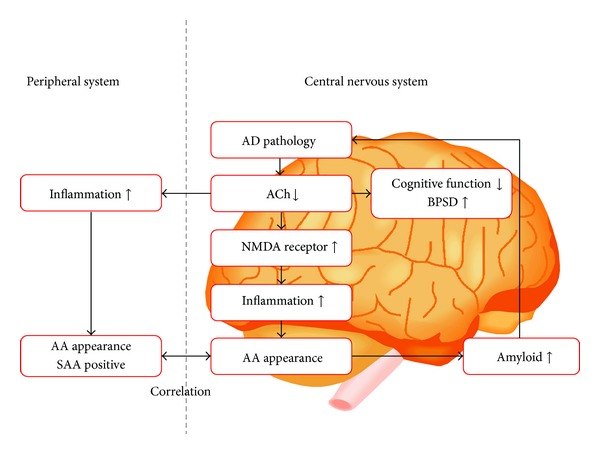Figure 1.

We can speculate that decrease in acetylcholine levels not only causes cognitive dysfunction and behavioral/psychological symptoms of dementia (BPSD) but also allows for inflammatory processes in the central nervous system and in peripheral tissues. The latter changes bring about anticholinergic activity (AA) in both the central nervous system and peripheral tissues by cytokine activation. AA in turn promotes the buildup of amyloid, which further downregulates the cholinergic system. We call this vicious cycle an “endogenous AA cascade.” AA: anticholinergic activity. ACh: acetylcholine. AD: Alzheimer's disease. BPSD: behavioral and psychological symptoms of dementia. NMDA: N-methyl-D-aspartate. SAA: serum anticholinergic activity. This figure is from the article by Hori et al. [18].
